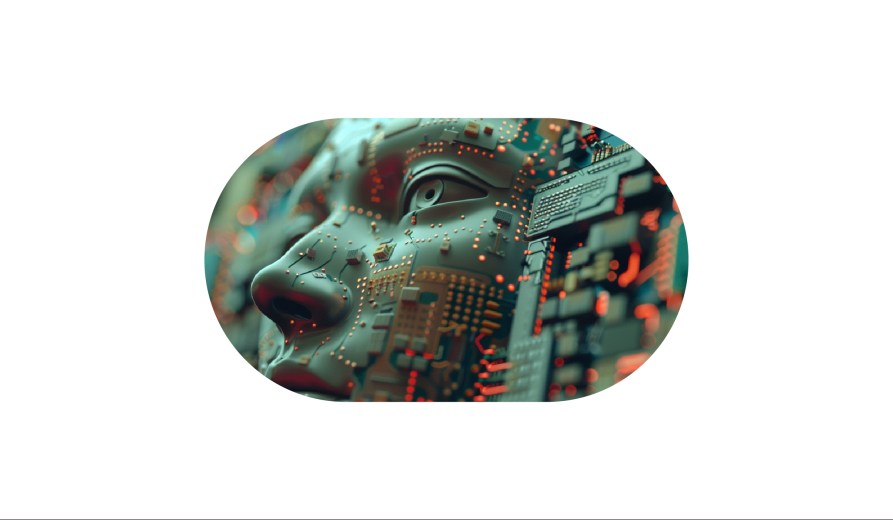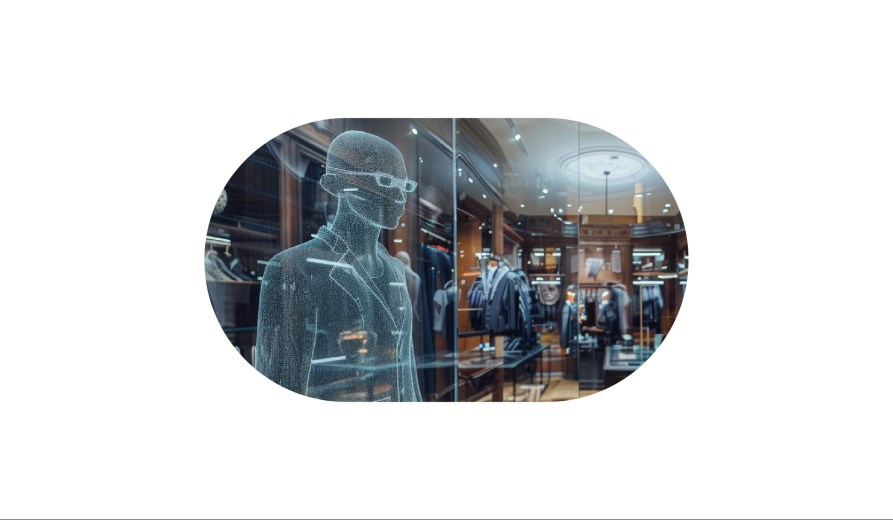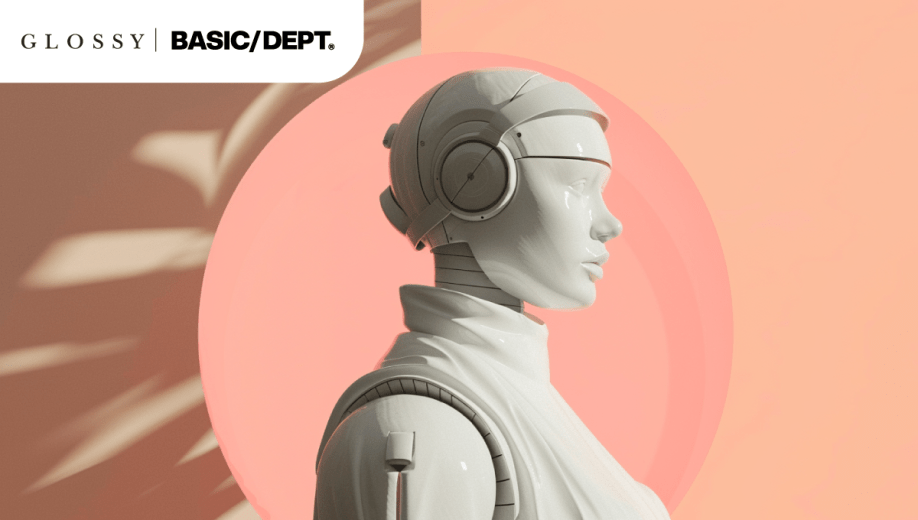This State of the Industry report, sponsored by BASIC/DEPT, dives into how fashion brands use AI across their businesses and plan to incorporate the technology in the future.
Brands in the fashion industry face high expectations, from keeping up with ever-evolving trends and consumer behaviors to addressing Gen Z’s latest values-based needs (while preserving the needs of other loyal generations).
As AI permeates every market, fashion brands are turning to the technology across all facets of their industry. They use it to simplify day-to-day tasks and revolutionize their approaches to designing products, marketing their lines and delivering new and meaningful customer experiences.
However, getting started with the tech can be challenging for some brands. Aside from identifying where to begin, they may need to reassure internal stakeholders the tech is reliable and safe, or they may need to gauge if their audience is open to experiences that incorporate AI first. Once they implement AI, though, they’re likely to realize the hard work was worth the benefits they see.
In this new State of the Industry report, Digiday and BASIC/DEPT surveyed 114 fashion brands to see how they’re using AI to automate tasks, from inventory management to marketing copy and design, and how AI enhances customer experiences. This report highlights how fashion brands use AI across their businesses and how they plan to incorporate the technology in the future.
Our brand respondents have started budgeting for AI-related projects and technology.
A significant majority (83%) are allocating 1%–20% of their overall budget to these areas this year. In 2025, respondents said their measured allocations would increase: 81% will put 21%–40% into their AI resources, and 7% plan to invest 41%–80% in projects and tech.
For fashion brands needing help dividing their budgets, Ryan Parkhurst, vice president of strategy at BASIC/DEPT, offered advice on allocations.
“I would advise clients to look at the size of their company and overall expenditure,” said Parkhurst. “The reason I say that is because the technology is still in sort of an experimental phase. If you’re a small fashion brand, you’re probably better off putting your money toward things with a high degree of confidence that’ll work right out of the gate.
“For more mature companies, I would think about AI not as a distinct allocation of budget but layered as a part of your existing R&D efforts to bring in the right resources and make it a part of what you were already trying to do,” he said. “Start with your goals and what you’re trying to achieve, and then bring in AI as a capability or an accelerant.”
The brands in our survey expect their investments in AI-related projects and tech to drive revenue increases via increasingly more effective personalized marketing: 78% expect their AI approaches to drive a 10%–25% increase in annual sales.
One example of these outcomes at work is, according to a recent Glossy article, global fashion search platform Lyst uses AI to personalize its customers’ experiences based on their behavior, tastes and preferences. The brand’s use of AI improved customer engagement and satisfaction, leading to a 20% boost in conversion in the past 12 months, aligning with what our respondents anticipate for 2024.
“AI can make fashion brands more effective throughout their business,” said Parkhurst. “Fashion houses can embed AI into their in-house design processes to spot trends earlier. We’re also helping fashion labels on their AI transformation journey across marketing, operations and IT. For example, if we’re able to use AI to target ads better, we can reduce product return rates. We’re also working with brands to integrate AI into their content efforts, helping to predict seasonal, social or regional fashion trends.”
As for the specific teams engaging with AI, customer-facing teams — customer support (85%), social media (85%) and ad operations (84%) are the primary users of the tech among the fashion-brand respondents in our survey. Design (77%), supply chain (71%) and sales (70%) teams follow as the next three cited departments using AI.
The wide range of teams engaging with AI suggests that fashion brands understand its wide applications and are becoming more comfortable with the technology.
“I would encourage any design or creative team in any industry to start using these tools,” Parkhurst said. “They are not there to replace us as creative individuals; they’re there to make us better and do more of the things we enjoy and less of the slower, tedious things.
“I would also encourage customer service teams to start using them,” he continued. “These can be excellent sources of distilling internal information and getting customers answers very quickly or allowing customers to serve themselves. That’s a way to potentially increase overall profitability by reducing cost of care for customers.”

Most of the time, our respondents use AI tech for content generation (i.e., generate content for marketing, personalized product recommendations, dynamically generated ads, etc.) at 90%.
After that, supply chain (i.e., using AI algorithms to optimize operations, demand forecasting, inventory management, production planning, logistics, etc.) (77%), customer experience (i.e., AI-driven chatbots and virtual assistants for personalized customer support) (76%) and data operations (i.e., AI to deliver actionable insights from our customer data) (75%) virtually tie for second place on our respondents’ lists.
These results align with recent Glossy research surveying those in fashion, beauty and wellness. In that report, chatbots/AI assistants were the most common application, with copy generation close behind.
For supply chain teams and inventory managers, 2024 is expected to be a time of reduced waste and improved efficiency. In our survey, 82% of the respondents said 20%–40% of their supply chain management will be optimized to these outcomes with AI’s help.
Meanwhile, customer experience teams are using AI to power chatbots, virtual assistants, sizing accuracy and product recommendations. Whether it’s quick customer support interactions (86%), product info (73%) or sizing/recommendation help (68%), these roles landed in the top three of our respondents’ lists.
As fashion brands think about the most effective ways to use AI, Henry Daubrez, CEO and CCO at DOGSTUDIO/DEPT, underscores the importance of honing in on the customer experience.
“Any marketing executive or data analyst’s dream has always been about understanding what is going on in a consumer’s mind,” Daubrez said. How can we anticipate their desires before they have time to formulate them?
“This is the promise AI hints at through its capacity to dig into millions of parameters and return cohesive information instantly,” he continued. “AI has the firepower to make sense of large masses of data, probabilities and patterns and accurately predict human behaviors which we tend to think are erratic but turn out to be predictable and possible to anticipate with enough computing power.”

Notably, often-predicted uses of AI-supported technology, such as VR and AR try-on applications, rank low. Reasons abound for why these applications have been slow to proliferate; among them is the element of developing and implementing advanced virtual try-on solutions — an expensive proposition. Brands often prioritize AI investments that promise more immediate and substantial returns, such as personalized marketing or supply chain optimization. These areas can offer clearer and quicker ROI compared to the complex and often costly virtual try-on technology.
Conversely, chatbots are proving to be a well-received and widely adopted use of AI. By 2025, 86% expect chatbots and virtual assistants to manage 20%–40% of customer-service experiences.
For data teams working on campaign analytics and automation, 83% expect 20%–40% of their approach to be AI-driven by year’s end.
Next year, these team types (supply chain, customer experience and data) expect further use-case development.
For example, 84% predict AI will drive increased dynamic content across e-commerce and social in particular, and 79% said it will personalize this kind of messaging and content across many channels. Then, 82% anticipate a sizable role for AI in data cleanup and engineering. And 79% predict that inventory management will receive further AI improvements.
The top two use cases in the e-commerce realm are inventory and market-trend predictions (anticipating market shifts, planning inventory levels and tailoring marketing campaigns to target specific customer segments more effectively), at 79%.
Personalized recommendations (delivering personalized product recommendations on e-commerce sites to increase conversion rates and drive customer loyalty) came in a close second pick at 78%.
“I think this data points to fashion brands also moving toward one easy application for AI,” said Daubrez. “How difficult is it to project yourself wearing clothes on either a hanger or a fashion model who doesn’t share your hair color, body type, skin color, etc.? We already see AI applications allowing consumers to provide a picture of themselves, a picture of a garment and see it applied to their own body. We are a very short leap from allowing consumers to upload a picture of themselves in an e-shop and see the entire catalog worn by them, not random models.”
The top e-commerce usage of AI among respondents is proving successful for brands like H&M and Zara. With data scientists and AI algorithms, H&M can predict and analyze trends, obtaining fashion trend data via search engine and blog information to inform how much H&M buys and when and where it should place that inventory in its stores. Using AI to predict what consumers will likely purchase months ahead allows fashion brands to reduce waste by letting data guide their purchasing decisions.
Additionally, recent reporting supports the respondents who said they’re using AI to drive more conversions. For example, fashion brand Ruti leveraged generative AI to give some of its sales associates a leg up, and within the first half of 2023, conversion rates increased nearly 3%, from 54.3% in 2022 to 57.2%. The brand increased average order values by 4.6%, from 54.4% to 59% in the same period.
In-store applications also highlight familiar categories: 79% of our fashion brand respondents said AI is powering real-time inventory management, and 78% said AI tech is helping with in-store sizing and style recommendations (i.e., delivering personalized recommendations based on customer preferences, body measurements and style preferences such as via virtual stylists or smart mirrors).
Another way fashion brands use AI in-store is through a retail strategy — clienteling — that involves building customer relationships through personalized service. This helps retailers understand customers’ needs and preferences to develop tailored experiences and strengthen customer loyalty.
“What I call ‘clienteling’ can be an excellent use case for AI in-store,” said Parkhurst. “Often, the difference between a great retail experience and a bad retail experience comes down to the amount of experience and knowledge the individual has.
“How do we deliver them the kind of insights it takes 5–10 years to obtain by working in the same environments, often with the same customers?” he continued. “That’s an opportunity where AI can surface information and insights that allow people to be better clienteling experts, not just retail associates.”

Our fashion brand respondents’ primary metric to measure AI initiatives’ success is average order value (77%), with customer satisfaction scores coming in a close second place at 75%.
Beyond those two KPIs, customer acquisition costs and feedback capture tie for third at 67%.
“Currently, I think brands are looking at the impact of AI under the very same angle they always have — gross margins, sales, etc.,” Daubrez said. “But, do they factor in the time it takes to identify, implement and test those new generations of tools?
“Technically, we are still really early, and these solutions will keep evolving in the years to come, and fast,” he continued. “We may be too early to understand the impact, as we’ve barely scratched the surface of what those technologies can do in the future. I think brands should take this time to try new things, adapt their mindset to the generation of tooling to come and slow down on trying to be production-ready.”
Technology comes with a set of challenges, and it is difficult to balance the opportunities. For our survey takers, the chief obstacles around AI-driven projects and technology are customers trusting the tech enough to accept it in their shopping journey (71%) and in-house concerns about ethically using AI and protecting data and privacy (71%).
After that, the familiar obstacles of high-quality data to drive AI initiatives (69%) and budget to buy the tech and put it to use (67%) come in second and third on the list.
“I would say the major challenge for all brands right now when it comes to AI is education,” said Daubrez. “We are dealing with a new kind of beast that comes with a global revolution across many industries. This shiny new toy seems to mainly exist through a collective and shared idea that it will replace humans across the board. But when you start digging to see what people know and understand about these tools, what they can do and how they work, you’ll quickly notice a lot of misinformation or even a plain lack of information.”
Daubrez believes understanding the capabilities of AI technologies, how they operate and their limitations is the best way to be equipped for future implementations.
To strengthen their AI initiatives, our fashion brand respondents are focusing on one idea over all others: inter-team and -department collaboration (86%). Implementing clear guidelines and policies to assuage their other points of concern comes in second at 72%.
In addition to working across departments and establishing solid frameworks, fashion brands would do well to think about how to incorporate AI into their first-party data.
“As brands work toward optimizing their AI efforts, they should think about how they can make their first-party data more of an asset and a non-replicable advantage,” Parkhurst said. “One of the things this technology is great at is crunching and producing large amounts of data if you can get customers to interact with it. We also enrich first-party datasets throughout time so those become an asset and not just something that feels like a data order.”
Most respondents are seeking outside expertise: 67% said they’re working with an outside vendor as they integrate AI tech into their workflows.
“Every fashion brand in the world is experimenting in some way with AI,” said Parkhurst. “They’re working with vendors or specialists like AI product companies on specific things, from how to generate personalized models that show our clothes online or how to get sizing right. There are plenty of people who aren’t agencies out there creating off-the-shelf and sometimes customizable products specifically for different problems in the fashion space.”
Factors to consider to ensure a good pick include data access and transparency — these are crucial to success and can demonstrate a solution’s scalability. It’s also essential to understand how much the brand owns and has access to versus the vendor or agency.
Adaptability and customizability are also vital, especially within the fashion industry. Brands need to feel like their own and not just any other brand, so understanding how well a solution can be adapted to a specific company or needs can ensure differentiation.
Product is a keyword among our respondents’ AI strategic use cases. The technology is expected to play a significant role — design and trend prediction — for 20%–40% of the lines our fashion brands are developing in 2024.
Many brands are already using AI in their design process. For example, the designer Almossawi uses AI in the early stages for inspiration and idea generation to facilitate and expand collaboration. The designer leaned on AI to create a fashion line based on the Japanese kimono, while luxury brands like Gucci are tapping into the tech to predict fashion trends and design collections that will resonate with changing consumer tastes.
Using AI for both operational and customer experience goals is equally important to our brand respondents with 94% citing each as somewhat to very significant.
For the fashion brands in our survey, the two chief impacts of AI on their tactical approaches fall under the categories of modeling new ideas and adding customer feedback into product design.
For example, 83% use AI to test new projects before wider-scale rollout, and 73% use it to streamline the incorporation of customer preferences into product design workflows.
And overall operational decisions are bound for AI augmentation as well. More than half of our respondents (55%) said AI-driven data analysis would account for 20%–40% of their ops decisions by 2025, and another 30% said it would influence 41%–60% of their operational decision-making.
And these steps are expected to take less time, thanks to AI technology coming into play. Three-quarters of our respondents (75%) said they estimate time-to-market for new products will be 10%–25% faster in 2025.
Ultimately, these impacts suggest a way of attaining an edge over the competition. For 91% of our fashion brand respondents, AI plays a significant role in staying ahead in a competitive marketplace.
To compete in the modern fashion market, fashion brands need to utilize AI — and there are many ways to do that.
“It’s essential, but I’ll preface this by saying that AI gets characterized in very specific use cases — generative AI or chatbots — there are specific images and use cases that come to mind,” said Parkhurst. “Fundamentally, it’s exponentially more computing power. I would caution fashion brands against pigeonholing the use cases and application of that technology because it has broad-ranging applications and value in very different ways. So, it’s not just about buying off-the-shelf tools and putting them into practice; it’s about thinking about the needs and the problems you’re trying to solve. Then, how can we use the capabilities of this technology to accelerate our solution to those problems to unlock those opportunities?”

Looking ahead, there are several opportunities for AI in the fashion space.
In the near term, Parkhurst believes fit-to-customer or made-to-measure capabilities will be accelerated, making that service more widely available. Additionally, he sees fashion brands building collections and curating around individual tastes instead of seasonal tastes.
A more distant prediction is around AI’s role in materials.
“I’m excited to see where materiality goes,” said Parkhurst. “I think it’ll be a lot of hard goods categories using AI to produce objects when given a prompt that produces industrial designs that are very different from conventional wisdom. I would like to see alternative ways of solving design, materiality and construction problems. When those things start to feel accepted, I think they will naturally drive aesthetic change.”
The applications for AI are numerous, and fashion brands are showing signs of understanding its potential as they anticipate increasing spend next year, leveraging AI to reduce time-to-market and using AI-driven data analyses to fuel a significant percentage of operational decisions.
This technology is vital to remaining competitive in the fashion industry, and brands are using it to predict trends and aid product design, deliver in-store sizing and style recommendations and boost customer service. As fashion brands continue expanding the departments that use AI and how they’re leveraging the technology, they’re improving internal operations and creating unique, meaningful customer experiences that make an impact and result in increased conversions and customer loyalty.




